#ai in php applications
Explore tagged Tumblr posts
Text
Explore how PHP can be integrated with artificial intelligence to create smarter, more dynamic web applications. This blog dives into AI techniques, libraries, and practical examples for enhancing PHP-driven projects with intelligent features. Perfect for developers looking to elevate their PHP skills and learn AI concepts, this blog offers insights on neural networks, machine learning, and data analysis in PHP. Discover the potential of PHP combined with AI today!
#php and artificial intelligence integration#ai in php applications#machine learning with php#php web development company in india#php web development agency in india#php web development
1 note
·
View note
Text
Ultimate POS v6.3 NULLED – Best ERP & Stock Management
Ultimate POS v6.3 NULLED – Best ERP & Stock Management Key Features: Multiple Business/Shops: Set up multiple businesses in the application. No restriction on numbers of businesses. Inventory & accounting information is kept separately for each business. Add Location / Storefronts / Ware House: Create multiple locations for your business/shop Manage all of them at the same time. Stocks,…
#AI#ai content#enterprise resource planning#erp#erp application#gst#inventory manager#invoicing application#open source point of sales#php point of sales#PhpPOS#point of sale#pos#retail shop manager#simple pos
0 notes
Text
Vibecoding a production app
TL;DR I built and launched a recipe app with about 20 hours of work - recipeninja.ai
Background: I'm a startup founder turned investor. I taught myself (bad) PHP in 2000, and picked up Ruby on Rails in 2011. I'd guess 2015 was the last time I wrote a line of Ruby professionally. I've built small side projects over the years, but nothing with any significant usage. So it's fair to say I'm a little rusty, and I never really bothered to learn front end code or design.
In my day job at Y Combinator, I'm around founders who are building amazing stuff with AI every day and I kept hearing about the advances in tools like Lovable, Cursor and Windsurf. I love building stuff and I've always got a list of little apps I want to build if I had more free time.
About a month ago, I started playing with Lovable to build a word game based on Articulate (it's similar to Heads Up or Taboo). I got a working version, but I quickly ran into limitations - I found it very complicated to add a supabase backend, and it kept re-writing large parts of my app logic when I only wanted to make cosmetic changes. It felt like a toy - not ready to build real applications yet.
But I kept hearing great things about tools like Windsurf. A couple of weeks ago, I looked again at my list of app ideas to build and saw "Recipe App". I've wanted to build a hands-free recipe app for years. I love to cook, but the problem with most recipe websites is that they're optimized for SEO, not for humans. So you have pages and pages of descriptive crap to scroll through before you actually get to the recipe. I've used the recipe app Paprika to store my recipes in one place, but honestly it feels like it was built in 2009. The UI isn't great for actually cooking. My hands are covered in food and I don't really want to touch my phone or computer when I'm following a recipe.
So I set out to build what would become RecipeNinja.ai
For this project, I decided to use Windsurf. I wanted a Rails 8 API backend and React front-end app and Windsurf set this up for me in no time. Setting up homebrew on a new laptop, installing npm and making sure I'm on the right version of Ruby is always a pain. Windsurf did this for me step-by-step. I needed to set up SSH keys so I could push to GitHub and Heroku. Windsurf did this for me as well, in about 20% of the time it would have taken me to Google all of the relevant commands.
I was impressed that it started using the Rails conventions straight out of the box. For database migrations, it used the Rails command-line tool, which then generated the correct file names and used all the correct Rails conventions. I didn't prompt this specifically - it just knew how to do it. It one-shotted pretty complex changes across the React front end and Rails backend to work seamlessly together.
To start with, the main piece of functionality was to generate a complete step-by-step recipe from a simple input ("Lasagne"), generate an image of the finished dish, and then allow the user to progress through the recipe step-by-step with voice narration of each step. I used OpenAI for the LLM and ElevenLabs for voice. "Grandpa Spuds Oxley" gave it a friendly southern accent.
Recipe summary:
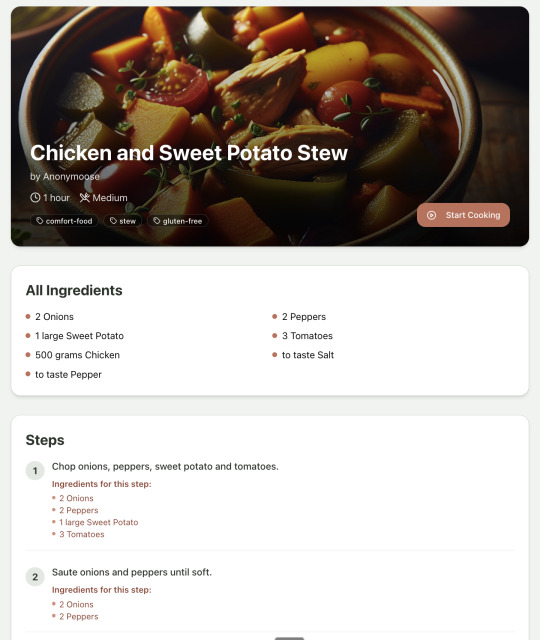
And the recipe step-by-step view:
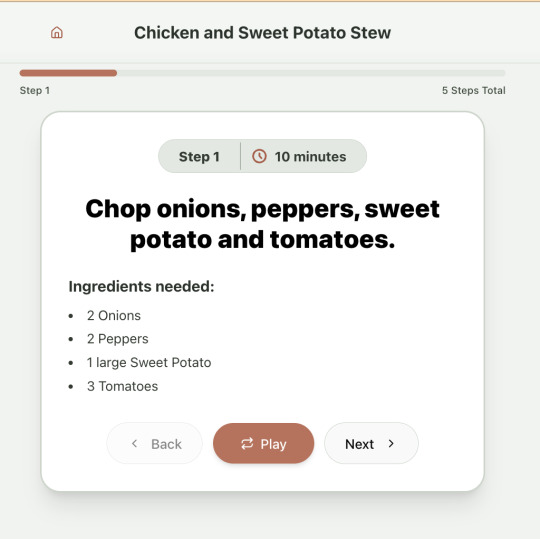
I was pretty astonished that Windsurf managed to integrate both the OpenAI and Elevenlabs APIs without me doing very much at all. After we had a couple of problems with the open AI Ruby library, it quickly fell back to a raw ruby HTTP client implementation, but I honestly didn't care. As long as it worked, I didn't really mind if it used 20 lines of code or two lines of code. And Windsurf was pretty good about enforcing reasonable security practices. I wanted to call Elevenlabs directly from the front end while I was still prototyping stuff, and Windsurf objected very strongly, telling me that I was risking exposing my private API credentials to the Internet. I promised I'd fix it before I deployed to production and it finally acquiesced.
I decided I wanted to add "Advanced Import" functionality where you could take a picture of a recipe (this could be a handwritten note or a picture from a favourite a recipe book) and RecipeNinja would import the recipe. This took a handful of minutes.
Pretty quickly, a pattern emerged; I would prompt for a feature. It would read relevant files and make changes for two or three minutes, and then I would test the backend and front end together. I could quickly see from the JavaScript console or the Rails logs if there was an error, and I would just copy paste this error straight back into Windsurf with little or no explanation. 80% of the time, Windsurf would correct the mistake and the site would work. Pretty quickly, I didn't even look at the code it generated at all. I just accepted all changes and then checked if it worked in the front end.
After a couple of hours of work on the recipe generation, I decided to add the concept of "Users" and include Google Auth as a login option. This would require extensive changes across the front end and backend - a database migration, a new model, new controller and entirely new UI. Windsurf one-shotted the code. It didn't actually work straight away because I had to configure Google Auth to add `localhost` as a valid origin domain, but Windsurf talked me through the changes I needed to make on the Google Auth website. I took a screenshot of the Google Auth config page and pasted it back into Windsurf and it caught an error I had made. I could login to my app immediately after I made this config change. Pretty mindblowing. You can now see who's created each recipe, keep a list of your own recipes, and toggle each recipe to public or private visibility. When I needed to set up Heroku to host my app online, Windsurf generated a bunch of terminal commands to configure my Heroku apps correctly. It went slightly off track at one point because it was using old Heroku APIs, so I pointed it to the Heroku docs page and it fixed it up correctly.
I always dreaded adding custom domains to my projects - I hate dealing with Registrars and configuring DNS to point at the right nameservers. But Windsurf told me how to configure my GoDaddy domain name DNS to work with Heroku, telling me exactly what buttons to press and what values to paste into the DNS config page. I pointed it at the Heroku docs again and Windsurf used the Heroku command line tool to add the "Custom Domain" add-ons I needed and fetch the right Heroku nameservers. I took a screenshot of the GoDaddy DNS settings and it confirmed it was right.
I can see very soon that tools like Cursor & Windsurf will integrate something like Browser Use so that an AI agent will do all this browser-based configuration work with zero user input.
I'm also impressed that Windsurf will sometimes start up a Rails server and use curl commands to check that an API is working correctly, or start my React project and load up a web preview and check the front end works. This functionality didn't always seem to work consistently, and so I fell back to testing it manually myself most of the time.
When I was happy with the code, it wrote git commits for me and pushed code to Heroku from the in-built command line terminal. Pretty cool!
I do have a few niggles still. Sometimes it's a little over-eager - it will make more changes than I want, without checking with me that I'm happy or the code works. For example, it might try to commit code and deploy to production, and I need to press "Stop" and actually test the app myself. When I asked it to add analytics, it went overboard and added 100 different analytics events in pretty insignificant places. When it got trigger-happy like this, I reverted the changes and gave it more precise commands to follow one by one.
The one thing I haven't got working yet is automated testing that's executed by the agent before it decides a task is complete; there's probably a way to do it with custom rules (I have spent zero time investigating this). It feels like I should be able to have an integration test suite that is run automatically after every code change, and then any test failures should be rectified automatically by the AI before it says it's finished.
Also, the AI should be able to tail my Rails logs to look for errors. It should spot things like database queries and automatically optimize my Active Record queries to make my app perform better. At the moment I'm copy-pasting in excerpts of the Rails logs, and then Windsurf quickly figures out that I've got an N+1 query problem and fixes it. Pretty cool.
Refactoring is also kind of painful. I've ended up with several files that are 700-900 lines long and contain duplicate functionality. For example, list recipes by tag and list recipes by user are basically the same.
Recipes by user:

This should really be identical to list recipes by tag, but Windsurf has implemented them separately.
Recipes by tag:

If I ask Windsurf to refactor these two pages, it randomly changes stuff like renaming analytics events, rewriting user-facing alerts, and changing random little UX stuff, when I really want to keep the functionality exactly the same and only move duplicate code into shared modules. Instead, to successfully refactor, I had to ask Windsurf to list out ideas for refactoring, then prompt it specifically to refactor these things one by one, touching nothing else. That worked a little better, but it still wasn't perfect
Sometimes, adding minor functionality to the Rails API will often change the entire API response, rather just adding a couple of fields. Eg It will occasionally change Index Recipes to nest responses in an object { "recipes": [ ] }, versus just returning an array, which breaks the frontend. And then another minor change will revert it. This is where adding tests to identify and prevent these kinds of API changes would be really useful. When I ask Windsurf to fix these API changes, it will instead change the front end to accept the new API json format and also leave the old implementation in for "backwards compatibility". This ends up with a tangled mess of code that isn't really necessary. But I'm vibecoding so I didn't bother to fix it.
Then there was some changes that just didn't work at all. Trying to implement Posthog analytics in the front end seemed to break my entire app multiple times. I tried to add user voice commands ("Go to the next step"), but this conflicted with the eleven labs voice recordings. Having really good git discipline makes vibe coding much easier and less stressful. If something doesn't work after 10 minutes, I can just git reset head --hard. I've not lost very much time, and it frees me up to try more ambitious prompts to see what the AI can do. Less technical users who aren't familiar with git have lost months of work when the AI goes off on a vision quest and the inbuilt revert functionality doesn't work properly. It seems like adding more native support for version control could be a massive win for these AI coding tools.
Another complaint I've heard is that the AI coding tools don't write "production" code that can scale. So I decided to put this to the test by asking Windsurf for some tips on how to make the application more performant. It identified I was downloading 3 MB image files for each recipe, and suggested a Rails feature for adding lower resolution image variants automatically. Two minutes later, I had thumbnail and midsize variants that decrease the loading time of each page by 80%. Similarly, it identified inefficient N+1 active record queries and rewrote them to be more efficient. There are a ton more performance features that come built into Rails - caching would be the next thing I'd probably add if usage really ballooned.
Before going to production, I kept my promise to move my Elevenlabs API keys to the backend. Almost as an afterthought, I asked asked Windsurf to cache the voice responses so that I'd only make an Elevenlabs API call once for each recipe step; after that, the audio file was stored in S3 using Rails ActiveStorage and served without costing me more credits. Two minutes later, it was done. Awesome.
At the end of a vibecoding session, I'd write a list of 10 or 15 new ideas for functionality that I wanted to add the next time I came back to the project. In the past, these lists would've built up over time and never gotten done. Each task might've taken me five minutes to an hour to complete manually. With Windsurf, I was astonished how quickly I could work through these lists. Changes took one or two minutes each, and within 30 minutes I'd completed my entire to do list from the day before. It was astonishing how productive I felt. I can create the features faster than I can come up with ideas.
Before launching, I wanted to improve the design, so I took a quick look at a couple of recipe sites. They were much more visual than my site, and so I simply told Windsurf to make my design more visual, emphasizing photos of food. Its first try was great. I showed it to a couple of friends and they suggested I should add recipe categories - "Thai" or "Mexican" or "Pizza" for example. They showed me the DoorDash app, so I took a screenshot of it and pasted it into Windsurf. My prompt was "Give me a carousel of food icons that look like this". Again, this worked in one shot. I think my version actually looks better than Doordash 🤷♂️
Doordash:
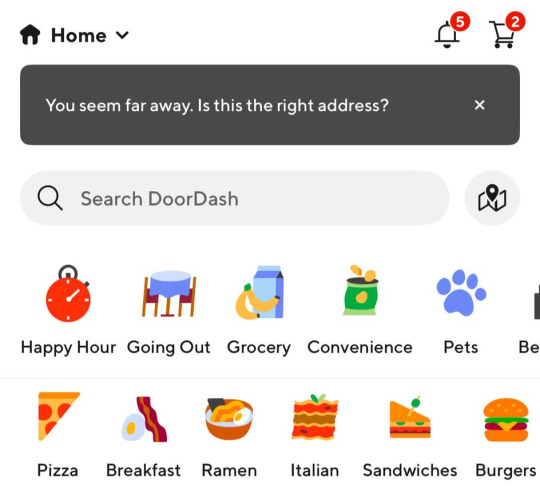
My carousel:
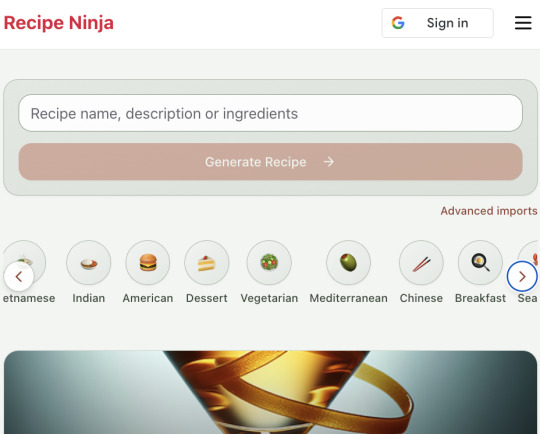
I also saw I was getting a console error from missing Favicon. I always struggle to make Favicon for previous sites because I could never figure out where they were supposed to go or what file format they needed. I got OpenAI to generate me a little recipe ninja icon with a transparent background and I saved it into my project directory. I asked Windsurf what file format I need and it listed out nine different sizes and file formats. Seems annoying. I wondered if Windsurf could just do it all for me. It quickly wrote a series of Bash commands to create a temporary folder, resize the image and create the nine variants I needed. It put them into the right directory and then cleaned up the temporary directory. I laughed in amazement. I've never been good at bash scripting and I didn't know if it was even possible to do what I was asking via the command line. I guess it is possible.

After launching and posting on Twitter, a few hundred users visited the site and generated about 1000 recipes. I was pretty happy! Unfortunately, the next day I woke up and saw that I had a $700 OpenAI bill. Someone had been abusing the site and costing me a lot of OpenAI credits by creating a single recipe over and over again - "Pasta with Shallots and Pineapple". They did this 12,000 times. Obviously, I had not put any rate limiting in.
Still, I was determined not to write any code. I explained the problem and asked Windsurf to come up with solutions. Seconds later, I had 15 pretty good suggestions. I implemented several (but not all) of the ideas in about 10 minutes and the abuse stopped dead in its tracks. I won't tell you which ones I chose in case Mr Shallots and Pineapple is reading. The app's security is not perfect, but I'm pretty happy with it for the scale I'm at. If I continue to grow and get more abuse, I'll implement more robust measures.
Overall, I am astonished how productive Windsurf has made me in the last two weeks. I'm not a good designer or frontend developer, and I'm a very rusty rails dev. I got this project into production 5 to 10 times faster than it would've taken me manually, and the level of polish on the front end is much higher than I could've achieved on my own. Over and over again, I would ask for a change and be astonished at the speed and quality with which Windsurf implemented it. I just sat laughing as the computer wrote code.
The next thing I want to change is making the recipe generation process much more immediate and responsive. Right now, it takes about 20 seconds to generate a recipe and for a new user it feels like maybe the app just isn't doing anything.
Instead, I'm experimenting with using Websockets to show a streaming response as the recipe is created. This gives the user immediate feedback that something is happening. It would also make editing the recipe really fun - you could ask it to "add nuts" to the recipe, and see as the recipe dynamically updates 2-3 seconds later. You could also say "Increase the quantities to cook for 8 people" or "Change from imperial to metric measurements".
I have a basic implementation working, but there are still some rough edges. I might actually go and read the code this time to figure out what it's doing!
I also want to add a full voice agent interface so that you don't have to touch the screen at all. Halfway through cooking a recipe, you might ask "I don't have cilantro - what could I use instead?" or say "Set a timer for 30 minutes". That would be my dream recipe app!
Tools like Windsurf or Cursor aren't yet as useful for non-technical users - they're extremely powerful and there are still too many ways to blow your own face off. I have a fairly good idea of the architecture that I want Windsurf to implement, and I could quickly spot when it was going off track or choosing a solution that was inappropriately complicated for the feature I was building. At the moment, a technical background is a massive advantage for using Windsurf. As a rusty developer, it made me feel like I had superpowers.
But I believe within a couple of months, when things like log tailing and automated testing and native version control get implemented, it will be an extremely powerful tool for even non-technical people to write production-quality apps. The AI will be able to make complex changes and then verify those changes are actually working. At the moment, it feels like it's making a best guess at what will work and then leaving the user to test it. Implementing better feedback loops will enable a truly agentic, recursive, self-healing development flow. It doesn't feel like it needs any breakthrough in technology to enable this. It's just about adding a few tool calls to the existing LLMs. My mind races as I try to think through the implications for professional software developers.
Meanwhile, the LLMs aren't going to sit still. They're getting better at a frightening rate. I spoke to several very capable software engineers who are Y Combinator founders in the last week. About a quarter of them told me that 95% of their code is written by AI. In six or twelve months, I just don't think software engineering is going exist in the same way as it does today. The cost of creating high-quality, custom software is quickly trending towards zero.
You can try the site yourself at recipeninja.ai
Here's a complete list of functionality. Of course, Windsurf just generated this list for me 🫠
RecipeNinja: Comprehensive Functionality Overview
Core Concept: the app appears to be a cooking assistant application that provides voice-guided recipe instructions, allowing users to cook hands-free while following step-by-step recipe guidance.
Backend (Rails API) Functionality
User Authentication & Authorization
Google OAuth integration for user authentication
User account management with secure authentication flows
Authorization system ensuring users can only access their own private recipes or public recipes
Recipe Management
Recipe Model Features:
Unique public IDs (format: "r_" + 14 random alphanumeric characters) for security
User ownership (user_id field with NOT NULL constraint)
Public/private visibility toggle (default: private)
Comprehensive recipe data storage (title, ingredients, steps, cooking time, etc.)
Image attachment capability using Active Storage with S3 storage in production
Recipe Tagging System:
Many-to-many relationship between recipes and tags
Tag model with unique name attribute
RecipeTag join model for the relationship
Helper methods for adding/removing tags from recipes
Recipe API Endpoints:
CRUD operations for recipes
Pagination support with metadata (current_page, per_page, total_pages, total_count)
Default sorting by newest first (created_at DESC)
Filtering recipes by tags
Different serializers for list view (RecipeSummarySerializer) and detail view (RecipeSerializer)
Voice Generation
Voice Recording System:
VoiceRecording model linked to recipes
Integration with Eleven Labs API for text-to-speech conversion
Caching of voice recordings in S3 to reduce API calls
Unique identifiers combining recipe_id, step_id, and voice_id
Force regeneration option for refreshing recordings
Audio Processing:
Using streamio-ffmpeg gem for audio file analysis
Active Storage integration for audio file management
S3 storage for audio files in production
Recipe Import & Generation
RecipeImporter Service:
OpenAI integration for recipe generation
Conversion of text recipes into structured format
Parsing and normalization of recipe data
Import from photos functionality
Frontend (React) Functionality
User Interface Components
Recipe Selection & Browsing:
Recipe listing with pagination
Real-time updates with 10-second polling mechanism
Tag filtering functionality
Recipe cards showing summary information (without images)
"View Details" and "Start Cooking" buttons for each recipe
Recipe Detail View:
Complete recipe information display
Recipe image display
Tag display with clickable tags
Option to start cooking from this view
Cooking Experience:
Step-by-step recipe navigation
Voice guidance for each step
Keyboard shortcuts for hands-free control:
Arrow keys for step navigation
Space for play/pause audio
Escape to return to recipe selection
URL-based step tracking (e.g., /recipe/r_xlxG4bcTLs9jbM/classic-lasagna/steps/1)
State Management & Data Flow
Recipe Service:
API integration for fetching recipes
Support for pagination parameters
Tag-based filtering
Caching mechanisms for recipe data
Image URL handling for detailed views
Authentication Flow:
Google OAuth integration using environment variables
User session management
Authorization header management for API requests
Progressive Web App Features
PWA capabilities for installation on devices
Responsive design for various screen sizes
Favicon and app icon support
Deployment Architecture
Two-App Structure:
cook-voice-api: Rails backend on Heroku
cook-voice-wizard: React frontend/PWA on Heroku
Backend Infrastructure:
Ruby 3.2.2
PostgreSQL database (Heroku PostgreSQL addon)
Amazon S3 for file storage
Environment variables for configuration
Frontend Infrastructure:
React application
Environment variable configuration
Static buildpack on Heroku
SPA routing configuration
Security Measures:
HTTPS enforcement
Rails credentials system
Environment variables for sensitive information
Public ID system to mask database IDs
This comprehensive overview covers the major functionality of the Cook Voice application based on the available information. The application appears to be a sophisticated cooking assistant that combines recipe management with voice guidance to create a hands-free cooking experience.
2 notes
·
View notes
Text
A quick guide to web development
Web development is building websites and web applications, with front-end (HTML, CSS, JavaScript for UI/UX), back-end (server-side logic using PHP, Python, Node.js), or full-stack development (both included ). ) are combined
Key ingredients:
Planning: Define purpose and audience. Design: Create plans and wireframes. Improvement: Build front end and back end. Testing: Make sure everything works properly. Launch: Launch to the site server. Maintenance: Refresh and maintain regularly.
Equipment and trends:
Front end: Response, Vue.js. Background: Node.js, Django. Hosting: AWS, Netlify. Focus on Responsive Design, PWAs, and AI products.
Start learning through FreeCodeCamp and keep learning to improve your skills!
2 notes
·
View notes
Text
Best IT Courses In Bhubaneswar:- seeree services pvt ltd.
Introduction:- seeree is one of the best IT training institute and Software industry, features completely Industrial training on Python , PHP , .NET , C Programming,Java , IOT , AI , GD PI , ORACLE and ALL CERTIFICATION COURSES as well as provides seminar,cultural activity and jobs
Courses we provided:- 1) Java Fullstack 2) Python Fullstack 3) PHP Fullstack 4) Preplacement Training & Sp. Eng 5) .NET Fulstack 6) SEO/Digital Marketing 7) SAP 8) MERN 9) Software Testing 10)Data Analyst 11)Data Science 12)Data Engineering 13)PGDCA 14)Tally 15)Graphics Design
Course1:- Java Fullstack

A Class in Java is where we teach objects how to behave. Education at seeree means way to success. The way of teaching by corporate trainers will bloom your career. We have the best java training classes in Bhubaneswar. 100% Placement Support. Job Support Post Training. This course will give you a firm foundation in Java, commonly used programming language. Java technology is wide used currently. Java is a programming language and it is a platform. Hardware or software environment in which a program runs, known as a platform. Since Java has its own Runtime Environment (JRE) and API, it is called platform. Java programming language is designed to meet the challenges of application development in the context of heterogeneous, network-wide distributed environment. Java is an object-oriented programming (OOP) language that uses many common elements from other OOP languages, such as C++. Java is a complete platform for software development. Java is suitable for enterprise large scale applications.]
Course2:- Python Fullstack

Seeree offers best python course in Bhubaneswar with 100% job assurance and low fee. Learn from real time corporate trainers and experienced faculties. Groom your personality with our faculty. Seeree helps to build confidence in students to give exposure to their skills to the company.
Python is dynamically typed , compiled and interpreted , procedural and object oriented , generalized , general-purpose , platform independent programming language. Python is a high-level, structured, open-source programming language that can be used for a wide variety of programming tasks.
Course3:- PHP Fullstack

seeree is the best training institute which provide PHP Training courses in bhubaneswar and all over odisha We aim the students to learn and grow altogether with the need of IT firms.
PHP is a server scripting language, and a powerful tool for making dynamic and interactive Web pages. PHP is a widely-used, free, and efficient alternative to competitors such as Microsoft's ASP.
Course4:- Preplacement Training & Sp. Eng

Welcome to SEEREE Institute, where excellence meets opportunity. At SEEREE, we are dedicated to providing a transformative learning experience that empowers students to achieve their goals and contribute to a brighter future.
Our institute offers cutting-edge courses designed to meet the needs of the ever-evolving global landscape. With a team of highly qualified instructors and state-of-the-art facilities, we ensure a supportive and inspiring environment for learning and growth.
Whether you're here to develop new skills, explore innovative fields, or pursue personal and professional success, SEEREE Institute is the perfect place to begin your journey. Thank you for choosing us, and we look forward to being a part of your success story.
Course5:- .NET Fullstack

Seeree offers best .NET course in Bhubaneswar with 100% job assurance and low fee. Learn from real time corporate trainers and experienced faculties. Groom your personality with our faculty. Seeree helps to build confidence in students to give exposure to their skills to the company.
Course6:- SEO/Digital Marketing
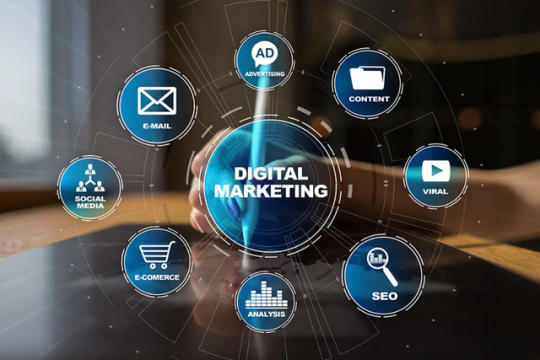
In today's fast-paced digital world, businesses thrive on visibility, engagement, and strategic online presence. At SEEREE, we empower you with the skills and knowledge to master the art of Search Engine Optimization (SEO) and Digital Marketing.
Our comprehensive program is designed for beginners and professionals alike, covering everything from keyword research, on-page and off-page SEO, and content marketing, to social media strategies, PPC campaigns, and analytics.
With hands-on training, real-world projects, and guidance from industry experts, we ensure you're equipped to drive measurable results and excel in this dynamic field.
Join us at SEEREE Institute and take the first step towards becoming a leader in the digital marketing landscape!"
Course7:- SAP
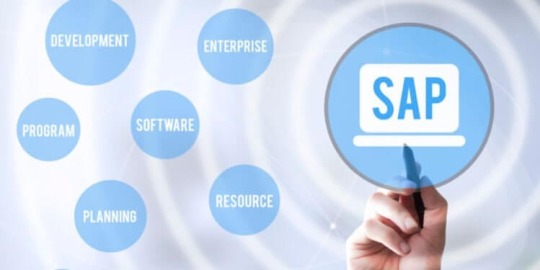
SAP refers to Systems, Applications, and Products in Data Processing. Some of the most common subjects covered in these courses include human resource software administration, database management, and business training. Obtaining SAP certification can be done on a stand-alone basis or as part of a degree program.
Course8:- MERN

Seeree offers the best MERN course in Bhubaneswar with 100% job assurance and low fees. Learn from real-time corporate trainers and experienced faculty. Seeree helps students build confidence and gain skills to excel in company roles.
Are you ready to step into the exciting world of web development? At SEEREE, we bring you a comprehensive MERN Stack course that equips you with the skills to build modern, dynamic, and responsive web applications from start to finish.
The MERN Stack—comprising MongoDB, Express.js, React.js, and Node.js—is one of the most sought-after technologies in the web development industry. Our program is designed to help you master each component of the stack, from creating robust backends and managing databases to crafting dynamic frontends and seamless APIs.
Course9:- Software Testing

Seeree offers best Testing course in Bhubaneswar with 100% job assurance and low fee. Learn from real time corporate trainers and experienced faculties. Groom your personality with our faculty. Seeree helps to build confidence in students to give exposure to their skills to the company.
In the fast-paced world of software development, ensuring the quality and reliability of applications is crucial. At SEEREE, we offer a comprehensive Software Testing course designed to equip you with the skills and techniques needed to excel in this essential field.
Our program covers all aspects of software testing, from manual testing fundamentals to advanced automation tools and frameworks like Selenium, JIRA, and TestNG. You’ll learn to identify bugs, write test cases, execute test scripts, and ensure software meets high-quality standards.
With hands-on training, real-world scenarios, and guidance from experienced industry professionals, you’ll be prepared to take on roles like Quality Assurance Engineer, Test Analyst, and Automation Tester.
Join SEEREE Institute and gain the expertise to become a key player in delivering flawless software solutions. Your journey to a rewarding career in software testing starts here!"
Course10:- Data Analyst

Seeree offers the best Data Analyst course in Bhubaneswar with 100% job assurance and affordable fees. Our comprehensive curriculum is designed to cover all aspects of data analysis, from data collection and cleaning to advanced data visualization techniques. Learn from real-time corporate trainers and experienced faculty members who bring industry insights into the classroom. Enhance your analytical skills and boost your career prospects with hands-on projects and real-world case studies. Our faculty also focuses on grooming your personality and soft skills, ensuring you are well-prepared for interviews and workplace environments. Seeree is dedicated to building confidence in students, providing them with the necessary exposure to showcase their skills to top companies in the industry.
Course11:- Data Science

Seeree offers the best Data Science course in Bhubaneswar with 100% job assurance and affordable fees. Our comprehensive curriculum is designed to cover all aspects of data science, from data collection and cleaning to advanced data visualization techniques. Learn from real-time corporate trainers and experienced faculty members who bring industry insights into the classroom. Enhance your analytical skills and boost your career prospects with hands-on projects and real-world case studies. Our faculty also focuses on grooming your personality and soft skills, ensuring you are well-prepared for interviews and workplace environments. Seeree is dedicated to building confidence in students, providing them with the necessary exposure to showcase their skills to top companies in the industry.
Course12:- Data Engineering
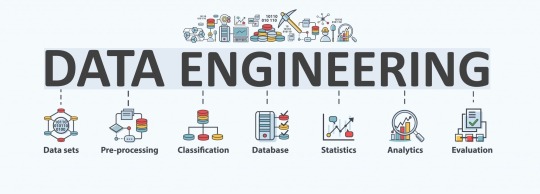
In the era of big data, the ability to design, build, and manage scalable data infrastructure is one of the most in-demand skills in the tech industry. At SEEREE, we are proud to offer a comprehensive Data Engineering course that prepares you for a career at the forefront of data-driven innovation.
Our program covers essential topics such as data modeling, ETL processes, data warehousing, cloud platforms, and tools like Apache Spark, Kafka, and Hadoop. You’ll learn how to collect, organize, and transform raw data into actionable insights, enabling businesses to make smarter decisions.
With real-world projects, expert mentorship, and hands-on experience with the latest technologies, we ensure that you are industry-ready. Whether you’re starting fresh or upskilling, this program will empower you to unlock opportunities in the rapidly growing field of data engineering.
Join SEEREE Institute and take the first step toward building the data pipelines that power tomorrow’s technology!"
Course13:- PGDCA

Seeree offers the best MERN course in Bhubaneswar with 100% job assurance and low fees. Learn from real-time corporate trainers and experienced faculty. Seeree helps students build confidence and gain skills to excel in company roles.
In today’s digital age, computer applications are at the heart of every industry, driving innovation and efficiency. At SEEREE Institute, our Post Graduate Diploma in Computer Applications (PGDCA) program is designed to provide you with in-depth knowledge and hands-on skills to excel in the IT world.
This program offers a comprehensive curriculum covering programming languages, database management, web development, software engineering, networking, and more. Whether you aim to enhance your technical expertise or step into a rewarding career in IT, PGDCA at SEEREE equips you with the tools to succeed.
With expert faculty, state-of-the-art labs, and real-world projects, we ensure that you gain practical experience and a strong theoretical foundation. By the end of the program, you’ll be prepared for roles such as software developer, system analyst, IT manager, or database administrator.
Course14:- Tally
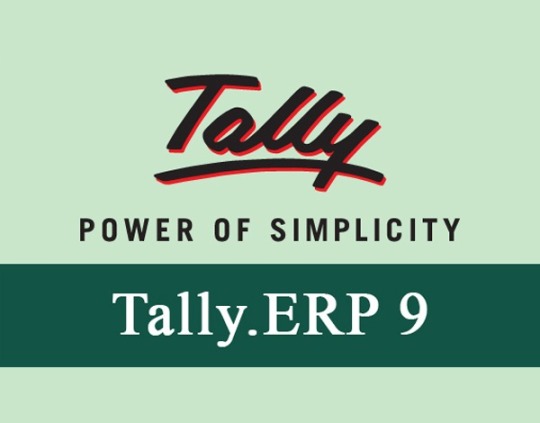
Seeree offers the best Tally course in Bhubaneswar with 100% job assurance and low fees. Learn from real-time corporate trainers and experienced faculty. Seeree helps students build confidence and gain skills to excel in company roles.
In today’s business world, efficient financial management is key to success, and Tally is one of the most trusted tools for accounting and financial operations. At SEEREE Institute, we offer a comprehensive Tally course designed to equip you with the skills needed to manage business finances effortlessly.
Our program covers everything from the basics of accounting and bookkeeping to advanced features like GST compliance, inventory management, payroll processing, and generating financial reports. With hands-on training and real-world applications, you’ll gain practical expertise in using Tally effectively for businesses of any scale.
Whether you're a student, a professional, or a business owner, our Tally program is tailored to meet your needs and enhance your career prospects in the fields of accounting and finance.
Course15:- Graphics Design

In the world of creativity and communication, graphic design plays a vital role in bringing ideas to life. At SEEREE Institute, our Graphic Design course is tailored to help you unlock your creative potential and master the art of visual storytelling.
Our program covers a wide range of topics, including design principles, color theory, typography, branding, and user interface design. You’ll gain hands-on experience with industry-standard tools like Adobe Photoshop, Illustrator, and InDesign, enabling you to create stunning visuals for print, digital media, and beyond.
Whether you're an aspiring designer or a professional looking to sharpen your skills, our expert trainers and real-world projects will provide you with the knowledge and confidence to excel in this competitive field.
Join SEEREE Institute and start your journey toward becoming a skilled graphic designer. Let’s design your future together!"
2 notes
·
View notes
Text
live blogging complaints about job hunting
why the fuck is "soft skills" a linkedin skill
"see how you compare with 1154 other applicants"
obligatory entry level -> requires n years of experience true combo
"Our code base uses Node.js, Rust, Go, PHP, AWS, TypeScript, JavaScript, React Native, SQL and VueJS."
"Plus we want you to be able to use Java and Python as well."
five million AI startups
9 notes
·
View notes
Text
Laravel Integration with ChatGPT: A Disastrous Misstep in Development?
From the high-tech heavens to the innovation arena, devs embark on daring odysseys to shatter limits and redefine possibilities!
Just like Tony Stark, the genius behind Iron Man, they strive to forge mighty tools that’ll reshape our tech interactions forever.
Enter the audacious fusion of Laravel, the PHP web framework sensation, and ChatGPT, the brainchild of OpenAI, a language model so sophisticated it’ll blow your mind!
But hold on, what seemed like a match made in coding heaven soon revealed a twist — disaster, you say? Think again!
The web app and website overlords ain’t got no choice but to wield the mighty ChatGPT API to claim victory in the fierce battleground of competition and serve top-notch experiences to their users.
So, brace yourselves to uncover the secrets of Laravel and ChatGPT API integration. But before we dive in, let’s shed some light on what this magical integration is and why it’s a godsend for both the users and the stakeholders. Let’s roll!

How can integrating ChatGPT benefit a Laravel project?
Listen up, developers! Embrace the mighty fusion of ChatGPT and Laravel, and watch as your project ascends to new heights of greatness!
Picture this: Conversational interfaces and genius chatbots that serve up top-notch customer support, effortlessly tackling those pesky queries and leaving users grinning with satisfaction. Oh yeah, we’re talking next-level interactions!
But hold on, there’s more! Prepare to be blown away by the AI chatbots that churn out data-driven dynamism and tailor-made responses, catering to user preferences like nobody’s business. It’s like magic, but better!
When you plug Laravel into the almighty ChatGPT API, the result? Pure genius! Your applications will become supercharged powerhouses of intelligence, interactivity, and premium content. Brace yourself for the seamless and exhilarating user experience that’ll leave your competition shaking in their boots.
So what are you waiting for? Integrate ChatGPT with your Laravel project and unleash the killer combination that’ll set you apart from the rest. Revolutionize your UX, skyrocket your functionalities, and conquer the coding realm like never before!
How to exactly integrate Laravel with ChatGPT? Keep reading here: https://bit.ly/478wten 🚀
4 notes
·
View notes
Text
Why Companies Are Prioritizing Full-Stack Web Developers in 2025
In 2025, the demand for Full-Stack Web Developers is not just rising—it’s booming. Whether you’re browsing job boards, talking to recruiters, or reading tech industry reports, one thing is clear: companies of all sizes and across industries are actively seeking Full-Stack Web Developers more than ever before. But what’s driving this trend? Why are these professionals becoming the backbone of digital teams?
Let’s break it down in a way that’s both insightful and human.
What Exactly Is a Full-Stack Web Developer?
A Full-Stack Web Developer is someone who can build both the front end (what users see) and the back end (the server, database, and application logic) of a website or web application. In other words, they’re the Swiss Army knives of the development world—equipped to handle multiple layers of a tech project from start to finish.
They can:
Design responsive interfaces using HTML, CSS, and JavaScript.
Build server-side logic with languages like Node.js, Python, Ruby, or PHP.
Manage databases like MongoDB, MySQL, or PostgreSQL.
Work with frameworks like React, Angular, and Express.js.
Collaborate with DevOps for deployment and testing.
Why the Sudden Surge in 2025?
The world is moving fast. Companies are no longer just tech companies—every company is becoming a tech company in some form. From healthcare to finance, education to retail, digital transformation is the name of the game. And this is exactly where Full-Stack Web Developers come in.
Here’s why companies are prioritizing Full-Stack Web Developers in 2025:
1. Agility in a Fast-Moving Market
In 2025, speed is everything. Whether it's launching a new product, updating an existing feature, or pivoting based on customer feedback, businesses need to move quickly.
Full-Stack Web Developers can handle multiple components of a project, reducing the need for separate front-end and back-end teams.
This means faster development cycles, fewer communication gaps, and quicker releases.
2. Cost-Effective Talent Investment
Hiring separate specialists for the front end, back end, database, and DevOps can be expensive—especially for startups and small businesses.
A skilled Full-Stack Web Developer can reduce hiring costs while still delivering comprehensive solutions.
With remote work being the norm in 2025, companies are choosing versatile developers who can wear multiple hats.
3. Greater Collaboration and Communication
Modern software development is all about teamwork. A Full-Stack Web Developer understands how the entire system fits together, making them excellent communicators between designers, product managers, and engineers.
They act as bridges across technical and non-technical teams.
Their holistic view of a project enables better decision-making.
4. Cloud-Native Development and Microservices
With cloud computing, containerization, and microservices shaping the tech landscape in 2025, developers who understand end-to-end application architecture are invaluable.
Full-Stack Web Developers are equipped to work with cloud platforms like AWS, Azure, and GCP.
They’re more than coders—they're system architects who understand scalability and performance.
5. AI and Automation Integration
Today’s applications aren’t just about static content—they’re intelligent. More businesses are integrating AI-powered features, real-time analytics, and automation into their platforms.
A Full-Stack Web Developer is familiar with APIs, machine learning libraries, and real-time communication tools like WebSockets.
Their diverse skill set is critical to building smarter, more connected web applications.
6. A Career Path That Evolves with Tech
Companies are not just hiring Full-Stack Web Developers for what they can do now, but for how adaptable they are to future tech.
They’re curious, lifelong learners.
Their broad foundation allows them to quickly pick up new frameworks, languages, or paradigms.
Real Stories from the Industry
Take the example of a mid-size retail brand that pivoted to e-commerce in 2023. By 2025, they needed someone who could maintain the website, optimize performance, implement new payment features, and ensure mobile responsiveness. Instead of hiring multiple roles, they onboarded a senior Full-Stack Web Developer, who delivered results across the board and streamlined collaboration across departments.
Or consider a SaaS startup in the healthtech space. With limited funding but big ambitions, their decision to hire Full-Stack Web Developers early on allowed them to scale from MVP to enterprise-level in under two years.
Final Thoughts
As technology continues to evolve, businesses need flexible, tech-savvy professionals who can keep up with the pace of change. The Full-Stack Web Developer is no longer a “nice-to-have”—they’re mission-critical. Whether it’s about speed, scalability, cost-efficiency, or innovation, these developers are answering the call in 2025.
If you're a budding developer or someone considering a career switch, now is the perfect time to invest in becoming a Full-Stack Web Developer. And if you're a business looking to stay ahead—this is the talent you want on your team.
0 notes
Text
10 Best Web Development Companies to Watch in 2025
As we move into 2025, building a powerful online presence is no longer optional—it’s essential. Whether you are a startup, a growing business, or an established enterprise, finding the best web development company can help you launch a high-performing, user-friendly website that supports your business goals.
India, known for its tech talent and cost-effective solutions, is home to several top-rated web development firms. This blog explores the 10 best web development companies to watch in 2025 that are based in or operate in India, offering everything from custom website creation to complex enterprise-level solutions.

10 Best Web Development Companies
1. Singsys
Headquartered in Lucknow with a strong presence in Singapore, Singsys has 15+ years of experience delivering robust and scalable web solutions for clients globally.
Services:
Custom web development
Mobile app development (iOS & Android)
E-commerce development
UI/UX design
Digital marketing
Software testing
2. TCS (Tata Consultancy Services)
A globally recognised IT services leader, TCS offers full-spectrum web and software development services with enterprise-grade security and performance.
Services:
Custom web application development
Enterprise software
Cloud solutions
System integration
UI/UX development
3. Infosys
One of India’s most respected IT firms, Infosys delivers strategic digital services with a focus on enterprise transformation.
Services:
Web and software development
AI and data analytics
Application modernisation
User experience design
DevOps and cloud engineering
4. Wipro
Wipro offers cutting-edge digital services and solutions, including web and app development for large-scale businesses.
Services:
Web app development
CMS integration
E-commerce platforms
Security and compliance
AI-powered user experiences
5. Tech Mahindra
Part of the Mahindra Group, Tech Mahindra provides IT and digital transformation services including customised web development.
Services:
Web development
CRM solutions
UX/UI design
Mobility and cloud services
Cybersecurity
6. Mindtree (now LTIMindtree)
Mindtree offers digital transformation and web solutions for businesses of all sizes across the globe, with strong development teams in India.
Services:
Custom web development
Cloud-native applications
E-commerce development
Product engineering
Agile and DevOps services
7. Hyperlink InfoSystem
Based in Ahmedabad, Hyperlink InfoSystem is known for delivering innovative web and mobile solutions at competitive pricing.
Services:
Website and web app development
Mobile app development
Blockchain and AI development
UI/UX design
E-commerce solutions
8. Konstant Infosolutions
This Jaipur-based firm is a leading web and mobile app development company with clients across North America, Europe, and Asia.
Services:
PHP and Laravel development
CMS-based websites
Progressive Web Apps (PWA)
E-commerce platforms
Cross-platform apps
9. FATbit Technologies
Located in Mohali, FATbit focuses on ready-made software solutions and web development for startups and enterprises alike.
Services:
Custom web development
Marketplace and e-commerce solutions
UI/UX and branding
MVP development
Software as a Service (SaaS) platforms
10. PixelCrayons
PixelCrayons is based in Noida and has over 18 years of experience delivering custom software and web development services globally.
Services:
Website development
CMS and eCommerce platforms
Web portal development
API integration
Software support and maintenance
India continues to be a top destination for businesses looking to partner with the best web development company. These 10 firms are not only experienced but also innovative and client-focused.
Whether you're planning a new digital product or improving your existing one, these companies are well-equipped to bring your vision to life in 2025 and beyond.
0 notes
Text
Techvoot Blog: Expert Insights on ERP, App Development, AI, and Cloud Technology
🧩 Odoo & ERP Solutions Top 10 Must-Have Odoo Modules For Your Success Explore essential Odoo modules that can streamline operations and drive business growth.
Odoo Vs. Other ERP Solutions: Which One Is Right For Your Business? A comparative analysis to help you determine if Odoo is the ideal ERP solution for your organization's needs.
💻 Web & Software Development Agile Vs. Waterfall: Choosing The Right Methodology For Your Project Understand the differences between Agile and Waterfall methodologies to select the best fit for your project.
Bun 1.0 – JavaScript Meets Speed Discover how Bun 1.0 offers a faster and more efficient JavaScript development experience compared to traditional tools.
AWS Terraform Modules: Unleashing The Power Of Infrastructure As Code Learn how AWS Terraform modules can revolutionize infrastructure management through automation and scalability.
📱 Mobile & App Development Best Mobile Application Testing Tools For 2025 A comprehensive list of top mobile app testing tools to ensure quality and performance in 2025.
How To Choose The Right Mobile App Development Company Guidelines to help you select a mobile app development partner that aligns with your business goals.
What's New In Flutter 3.19 An overview of the latest features and improvements in Flutter 3.19, enhancing app development capabilities.
🤖 AI & Automation The Power Of OpenAI In Laravel Explore how integrating OpenAI with Laravel can enhance applications with advanced natural language processing capabilities.
React For Chatbot: Everything You Need To Know Understand how React.js can be utilized to develop efficient and interactive chatbots for various applications.
The Role of AI in Streamlining Workspace Management Processes Discover how AI can optimize workspace management by automating resource allocation and enhancing employee experiences. 🌐 Frameworks & Technologies What Is Angular? A comprehensive introduction to Angular, its features, and how it facilitates the development of single-page applications.
Laravel Web Development An overview of Laravel's capabilities as a PHP framework for building robust and scalable web applications.
1 note
·
View note
Text
Software Development Company - Acemakers Technologies Pvt. Ltd

Leading Software Development Services Globally
Acemakers Technologies Pvt. Ltd. is a premier software development company based in Jaipur, India, offering world-class software development services to clients worldwide. With expertise in delivering custom software development solutions, we cater to businesses in the UK, USA, UAE, Canada, Australia, and beyond. Our company is known for its cost-effective and scalable software development solutions, ensuring businesses of all sizes get high-quality services within budget.
Why Choose Acemakers Technologies Pvt. Ltd.?
End-to-End Software Development Services – From ideation to deployment.
Affordable Pricing – Quality software solutions at competitive rates.
Global Reach – Clients across USA, UK, Canada, Australia, UAE, and more.
Expert Developers – A skilled team of developers, engineers, and testers.
Custom Software Development – Tailored solutions to fit business needs.
Cutting-Edge Technologies – AI, Blockchain, Cloud Computing, and more.
Our Comprehensive Software Development Services
Custom Software Development
Our software development agency specializes in creating custom software solutions that meet specific business requirements. Whether it's enterprise software, automation tools, or cloud-based applications, we deliver solutions that drive growth and efficiency.
Web Application Development
We develop high-performance web applications using the latest technologies like ReactJS, Angular, Vue.js, Node.js, and PHP. Our web solutions ensure scalability, security, and seamless user experience.
Mobile App Development
From Android and iOS app development to cross-platform applications, we provide cutting-edge mobile solutions tailored for diverse industries.
Enterprise Software Solutions
Our expertise in enterprise software development includes CRM, ERP, HRM, and SCM systems that enhance business operations and improve workflow automation.
Software Maintenance & Support
Acemakers Technologies provides 24/7 maintenance and support services, ensuring your software applications run smoothly without downtime.
Our Technology Stack
We use the latest software development platforms and technologies to build robust and scalable applications:
Programming Languages: Python, Java, .NET, PHP, JavaScript
Frameworks: ReactJS, Angular, Laravel, Django, Spring Boot
Mobile Technologies: Swift, Kotlin, Flutter, React Native
Database Management: MySQL, PostgreSQL, MongoDB
Cloud Solutions: AWS, Azure, Google Cloud
AI & Machine Learning: TensorFlow, PyTorch, OpenAI
Industries We Serve
We offer software development services to various industries, including:
Healthcare & Telemedicine
E-commerce & Retail
Education & E-learning
Finance & Banking
Real Estate & Construction
Manufacturing & Logistics
Hospitality & Travel
Why Do Businesses Choose Our Software Development Solutions?
1. Scalable & Future-Ready Solutions
Our software development services company delivers applications that are adaptable to future business needs.
2. Fast Turnaround Time
We focus on delivering high-quality software solutions with quick turnaround time and within deadlines.
3. Security & Compliance
We ensure our software solutions are fully secure and comply with GDPR, HIPAA, and other global standards.
4. Agile Development Methodology
We follow Agile and DevOps methodologies to ensure smooth project execution and seamless collaboration.
Global Presence – Serving Clients Worldwide
Acemakers Technologies Pvt. Ltd. is a trusted software development agency providing services across Jaipur, India, UK, USA, UAE, Canada, Australia, and other global markets. Our team ensures quality and cost-effectiveness while offering affordable software development solutions that meet global standards.
Contact Us Today!
If you're looking for a trusted software development company to build custom software solutions at an affordable price, contact us today.
📞 Mobile No.: +91 9783865051 📧 Email: [email protected] 🌐 Website: www.theacemakers.com
0 notes
Text
Full Stack Web Developer Salary in India 2025 – Career Guide

Is web development a career good in 2025? What is the salary of full-stack developers in India nowadays? Which skills are essential to become one?
Thinking of a career as a full-stack developer? With businesses shifting online, the demand for web developers is growing rapidly. This guide covers everything you need to know, including the salary of a full-stack developer in India, city-wise salary variations, and insights into the job role. We also discuss how to start your journey in full-stack web development and the essential skills required for success.
Why Choose Web Development as a Career?
You know the beauty of a fortune, right? The demand for web developers in the market is skyrocketing along with soaring figures for every industry adopted the feature of digital transformation. Today, every single entity, may it be start-ups or multinational companies, requires highly robust online platforms, and full stack developers play a very vital part in this entire process.
What is Full Stack Web Development?
Full stack development involves working both on front sites (user interface) and backend (server, database) of a website or application. Full stack developer does entire development cycle therefore makes him or her of great value.
Define Full Stack Developer
A full stack developer is one who knows:
Frontend: HTML, CSS, JavaScript, Bootstrap
Backend: PHP, Java, Python, Node.js
Databases: MySQL, MongoDB, etc.
Tools: Git, GitHub, version control systems
They can independently design and build web applications from the scratch.
The 2025 Must-have Full Stack Developer Skills
To be a great full stack developer, one would have to be proficient in:
Frontend:
HTML, CSS, JavaScript
js, Angular, Bootstrap
Backend:
js, PHP, Python, Java
API development, server handling
Database and Tools:
MySQL, MongoDB, PostgreSQL
Git/GitHub for version control
Soft skills such as problem solving, teamwork, and communication are equally important.
Full Stack Developer Salary in India - Insight into 2025
✅ Average Salary:
6 LPA (driven by professionals in India)
✅ Monthly Salary:
75,000+ per month average
✅ Fresher Salary:
8-4.5 LPA varying with location and skills
✅ At 2-3 Years Experience:
An average of 5.9 LPA
✅ After 5+ Years:
At 9 LPA and above
Full Stack Developer Salary by Company (2025)
Infosys – ₹5.5 LPA
TCS – ₹4.9 LPA
Cognizant – ₹6.6 LPA
HCL – ₹8.2 LPA
Accenture – ₹7.7 LPA
Amazon – ₹15.9 LPA
Google – ₹26.5 LPA
Full Stack Developer Salary by City in India
Bangalore – ₹7.1 LPA
Chennai – ₹5.7 LPA
Pune – ₹6.3 LPA
Hyderabad – ₹6.5 LPA
Ahmedabad – ₹5 LPA
Jaipur – ₹4.8 LPA
Salary by Industry Type
IT Services & Consulting – ₹6 LPA
Software Product – ₹9.4 LPA
Financial Services – ₹10.9 LPA
Analytics & KPO – ₹11 LPA
Internet/E-Commerce – ₹9.2 LPA
BPO – ₹7.2 LPA
Factors Affecting Salary
Experience Level: A senior earns many times more
Size of Company: Big companies pay more - especially at MNCs
Location: Salaries are higher in metro cities
Industry: Finance, IT, and healthcare offers best packages
Skillset: Specialized skills in frameworks or new tech stacks add value
Education/Certifications: Advanced training increases salary potential
Ways to Enhance Your Salary as a Full Stack Developer
Always Learning: Keep in touch with the frameworks like React, Angular, and Node.js.
Accredited: Professionalize with certifications from cloud, security, or advanced JS frameworks.
Build a Portfolio: Locate all the real-world projects, be it from clients or personal projects.
Niche: Specialize into e-commerce, fintech, or AI-integrated development.
Improve Soft Skills: Leadership, time management, and communication go a long way.
Location: Bopal & Iskcon-Ambli in Ahmedabad, Gujarat
Call now on +91 9825618292
Visit Our Website: http://tccicomputercoaching.com/
FAQ
What is the average salary of a Full-stack developer in India?
As data shared on AmbitionBox, the average full-stack developer salary in India is ₹8.9 Lakh Per Annum (LPA).
Is full stack development a good career choice?
Yes. It’s one of the most in-demand and future-proof roles in IT.
Can a fresher earn well in this field?
Absolutely. With the right training, a fresher can start with ₹4–5 LPA.
#Computer Training Institute#Full stack web developer salary in India#software training in Bopal Ahmedabad#TCCI - Tririd Computer Coaching Institute#web development course in bopal Ahmedabad
0 notes
Text
Website Development Company in Viman Nagar & Website Development Company in Magarpatta — Webtechnoz
In today’s fast-paced digital era, having a robust online presence is not a luxury — it’s a necessity. Whether you’re a budding startup or a well-established business, your website acts as the face of your brand. That’s where Webtechnoz steps in as the most sought-after website development company in Viman Nagar and the top-rated website development company in Magarpatta. With a passion for innovation and a focus on user-centric design, Webtechnoz is turning digital dreams into reality across Pune’s thriving tech hubs.
Why Choose Webtechnoz?
At Webtechnoz, we don’t just build websites — we create digital experiences that drive growth, engagement, and conversions. As a website development company in Viman Nagar, we’ve worked with diverse industries to craft tailored digital solutions. Similarly, our operations as a website development company in Magarpatta have helped tech-based businesses scale new heights with cutting-edge web technologies.
1. Local Expertise with a Global Outlook:
Webtechnoz understands the pulse of Pune’s dynamic markets. Our deep local insight as a website development company in Viman Nagar allows us to develop solutions tailored to regional business needs. Meanwhile, being a website development company in Magarpatta gives us direct access to one of Pune’s major IT corridors, helping us stay ahead in terms of technology, talent, and innovation.
2. Customized Web Solutions for Every Business:
Every brand is unique, and so are its website needs. Whether you’re looking for a minimal portfolio, a high-converting eCommerce store, or a powerful web app, we’ve got you covered. Our presence as a website development company in Viman Nagar allows us to work closely with lifestyle and retail brands, while our footprint as a website development company in Magarpatta caters more to enterprise clients and IT startups.
3. Tech-Driven Innovation:
As a leading website development company in Viman Nagar, we use the latest frameworks like React, Angular, and Laravel to create fast, secure, and scalable websites. As a forward-thinking website development company in Magarpatta, we also integrate AI, chatbots, and analytics into our builds to future-proof your digital presence.
Services We Offer at Webtechnoz:
When you partner with Webtechnoz, you get a full-spectrum digital partner. Here’s what makes us the go-to website development company in Viman Nagar and website development company in Magarpatta:

Responsive Website Development:
In an era dominated by mobile traffic, responsive design is non-negotiable. Whether you’re in Viman Nagar or Magarpatta, our team ensures your website looks great on every screen.
E-commerce Development:
We’ve helped numerous retailers go digital. Our Viman Nagar clients benefit from high-conversion Shopify and WooCommerce stores, while our Magarpatta clients prefer Magento and custom PHP-based platforms.
SEO-Optimized Websites:
As an experienced website development company in Viman Nagar, we bake SEO right into the code. As a strategic website development company in Magarpatta, we collaborate with top digital marketers to ensure your site ranks from day one.
Web Application Development:
Looking to build something more dynamic than a standard site? As a website development company in Viman Nagar, we create sleek web apps for service providers, and as a website development company in Magarpatta, we engineer complex SaaS platforms and enterprise portals.
Client Success Stories:
From real estate companies in Viman Nagar to fintech firms in Magarpatta, Webtechnoz has helped hundreds of businesses thrive online.
A real estate client based in Viman Nagar saw a 75% increase in inquiries within 3 months of launching a new site developed by Webtechnoz.
A SaaS company from Magarpatta reported a 40% boost in demo requests thanks to our conversion-optimized redesign.
No matter where your business is located, choosing Webtechnoz as your website development company in Viman Nagar or website development company in Magarpatta means choosing results.

Why Location Matters: Viman Nagar vs. Magarpatta:
Both Viman Nagar and Magarpatta are prime hubs of innovation in Pune, but they serve slightly different markets.
Viman Nagar: A bustling urban locale filled with retail, hospitality, and lifestyle brands. A website development company in Viman Nagar like Webtechnoz thrives here due to its proximity to both commercial and residential clusters.
Magarpatta: A planned IT and business district. Being a website development company in Magarpatta means serving enterprise-level clients who demand performance, scalability, and security.
Summary: Your Growth Partner in Pune’s Digital Future
Whether you’re a local business looking for a website development company in Viman Nagar or a tech enterprise searching for a reliable website development company in Magarpatta, Webtechnoz is your trusted partner. Our team blends creativity, technology, and strategy to deliver world-class web solutions right from the heart of Pune.
Join hundreds of satisfied clients who have already transformed their businesses with Webtechnoz. Let’s build the future — together.
0 notes
Text
API Integration: The Ultimate 2025 Guide to Connecting Your Digital World

Introduction to API Integration
The digital ecosystem in 2025 is more interconnected than ever. Whether it's mobile apps, websites, or cloud services, everything needs to talk to everything else. That’s where API integration becomes the hero behind the scenes. If you're running an e-commerce store, a SaaS platform, or even a blog, chances are you’re already using multiple APIs without even realizing it.
But what is API integration exactly, and why is it so crucial for businesses and developers today? In this in-depth guide, we’ll explore everything from the basics to the technicals, tools, benefits, reviews, and frequently asked questions.
What is API Integration?
API integration is the process of connecting two or more applications through their APIs (Application Programming Interfaces) to let them exchange data and perform functions automatically.
🧠 In Simple Terms:
Imagine your website needs to process payments using PayPal. Instead of building a payment system from scratch, you simply integrate PayPal’s API—and voilà, you’re accepting payments within minutes.
Why is API Integration Important in 2025?
From automation to improved user experience, here are the key reasons businesses rely on API integration:
🚀 Automation – Eliminate manual processes like order fulfillment, data entry, or email follow-ups.
🌍 Connectivity – Seamlessly connect CRMs, ERPs, and third-party tools.
⏱️ Efficiency – Save time and resources by reducing repetitive tasks.
📈 Scalability – Quickly add new features or platforms without starting from scratch.
💡 Innovation – Enables rapid innovation using third-party services (AI, analytics, etc.).
Types of API Integrations
Third-Party Integrations
Example: Adding Google Maps or Stripe to your site.
Custom API Integrations
Built in-house to connect proprietary systems.
Webhooks
Push updates in real-time (e.g., Slack notifications).
Middleware Platforms
Tools like Zapier or Integromat that connect multiple services.
Popular API Integration Examples
API TypeReal-World Use CasePayment APIStripe, PayPal, RazorpayEmail APIMailchimp, SendGridSocial MediaFacebook Graph API, Twitter APIMaps APIGoogle Maps API for location servicesCRM APISalesforce, HubSpotAI APIOpenAI, IBM Watson
How API Integration Works
Request – Your app sends a request (e.g., "Get user data").
Processing – API server processes it.
Response – API returns the data to your system.
Protocols used:
REST (most common)
SOAP (used in enterprise apps)
GraphQL (used for flexible querying)
Steps to Implement API Integration
1. Identify Your Integration Goals
What do you want to automate or simplify? For example, syncing customer data between Shopify and Mailchimp.
2. Choose the Right API
Select based on reputation, reliability, and documentation.
3. Obtain API Credentials
Most APIs require an API key or OAuth token for authentication.
4. Set Up the Endpoint
Define what data you want to send or receive using the API’s endpoint URL.
5. Write Integration Code
Use programming languages like:
JavaScript (Node.js)
Python
PHP
Java
6. Test Thoroughly
Use tools like Postman or Insomnia to simulate requests and validate responses.
7. Monitor & Maintain
APIs change over time. Monitor your integration for downtime or deprecations.
Best Tools for API Integration
Tool/PlatformPurposePostmanTesting and simulating API callsZapierNo-code API integrationsMake.comWorkflow automationSwaggerAPI design and documentationApigeeAPI management & analytics
Benefits of API Integration
✅ Business Advantages
Improved Workflow Automation
Faster Time to Market
Enhanced Customer Experience
✅ Technical Advantages
Modular Development
Reduced Server Load
Real-time Data Sync
Challenges in API Integration
Despite the advantages, API integration does come with its set of challenges:
⚠️ Security Risks – Improperly secured APIs can lead to data leaks.
🧩 Compatibility Issues – Not all APIs play well together.
🔄 API Deprecations – Providers may change or shut down APIs.
🕵️♂️ Monitoring – Ongoing maintenance is crucial.
Solution: Use API monitoring tools like Runscope, New Relic, or custom logging solutions.
Review: API Integration from a Marketer’s Perspective
As a digital marketing expert at diglip7.com, I’ve implemented dozens of API integrations—from CRMs like HubSpot to eCommerce tools like WooCommerce.
Here’s what I’ve observed:
🌟 Pros:
Saves countless hours by automating marketing emails, leads, and workflows.
Boosts lead conversion with real-time sync between platforms.
Makes campaign reporting more dynamic using analytics APIs.
⚠️ Cons:
Some third-party APIs are poorly documented.
Rate limits can restrict how often data updates.
Needs solid backend support for large-scale integrations.
Final Verdict:
“API integration is the backbone of modern marketing and automation. If your business isn't using APIs, you’re already behind.”
Use Case Scenarios for API Integration in 2025
1. E-Commerce Automation
Sync inventory between Shopify and Amazon.
Automatically send shipping updates via WhatsApp.
2. Lead Generation
Capture leads from Facebook Ads and push them to CRM.
3. AI & Chatbots
Connect AI-powered chatbots with your helpdesk or CRM.
4. Finance
Integrate real-time currency conversion APIs or payment gateways.
Best Practices for API Integration
🔐 Secure your API keys using environment variables.
📖 Read the documentation before starting any integration.
🛠️ Use versioned APIs to avoid breaking updates.
🧪 Always test in sandbox environments first.
📊 Log every request and response for future debugging.
Future of API Integration
By 2027, Gartner predicts that over 65% of digital transformations will depend heavily on APIs. Here’s what’s next:
Hyperautomation via API chaining.
API-as-a-Service will become mainstream.
AI-integrated APIs for intelligent decisions.
Voice-based API interactions for IoT and smart homes.
FAQs About API Integration
Q1: What’s the difference between API development and API integration?
API development involves creating an API.
API integration means connecting existing APIs to your system or software.
Q2: Do I need coding knowledge to use APIs?
Not always. Platforms like Zapier or Make.com allow no-code integrations.
Q3: Is REST or GraphQL better for integration?
REST is widely supported and simpler.
GraphQL is better for complex data requirements and performance.
Q4: How much does API integration cost?
Depends on complexity. Simple integrations can be free (Zapier), while enterprise-level custom integrations can cost thousands.
Q5: Can I integrate multiple APIs at once?
Yes, middleware tools or custom backend services can handle multiple API connections.
Q6: How do I know if an API is reliable?
Check:
Documentation quality
Uptime reports
Community reviews
Rate limits
Conclusion
API integration is no longer just a “developer thing”—it’s a business necessity. In 2025, APIs are the glue binding your digital platforms, services, and tools. Whether you're a marketer, developer, or entrepreneur, mastering API integration will future-proof your operations and accelerate growth.
Want more digital growth strategies, automation tools, and tech tutorials? 👉 Visit diglip7.com — your hub for modern digital marketing solutions.
0 notes
Text
The Rise of Tailored Tech: Custom Web Application Development in Bangalore with Hello Errors

In an era where user expectations are rising and digital presence determines business success, off-the-shelf web solutions no longer make the cut. Businesses in Bangalore—a city known for its tech-first culture and innovation hubs—are rapidly embracing custom web application development to stand out and stay agile. If you're searching for powerful, scalable, and business-aligned digital solutions, Hello Errors is your go-to partner for custom web application development in Bangalore.
Bangalore: A Breeding Ground for Tech-Centric Innovation
Bangalore has emerged as one of the world's top tech destinations, housing startups, scale-ups, and multinational corporations. What sets this city apart is its hunger for innovation and agility in adopting technology. As businesses evolve, their need for highly customized and industry-specific web applications becomes critical. From streamlining backend operations to building powerful user dashboards, the demand for custom web application development in Bangalore is at an all-time high.
What is Custom Web Application Development?
A custom web application is designed specifically to cater to a business’s individual needs. Unlike generic CMS or SaaS tools, custom applications are:
Fully customizable
Tailored to specific workflows
Designed for performance and scalability
More secure
Easier to integrate with existing tools or systems
Custom apps are especially useful when businesses have unique processes that can’t be accommodated by out-of-the-box solutions.
Why Businesses Prefer Custom Web Apps Over Templates
While platforms like WordPress or Shopify serve basic needs, they often limit your potential in terms of design flexibility, functionality, and integration. Here’s why businesses are shifting towards custom web application development in Bangalore:
✅ Greater Control Over Features
Custom applications allow you to create exactly what your business needs—nothing more, nothing less. Want a unique booking engine? A dynamic data dashboard? A multi-role user access system? It’s all possible.
✅ Optimized for Your Audience
With custom development, you get the power to build UX/UI around your customer’s behavior, ensuring more conversions, longer engagement, and better brand loyalty.
✅ Better Long-Term Value
No recurring license fees. No restrictions on scaling. While the initial investment may be higher, the lifetime value of a custom app pays off in productivity and profitability.
Hello Errors: Pioneers of Custom Web Application Development in Bangalore
Hello Errors is not just another web development company—we are a team of thinkers, creators, coders, and designers passionate about digital innovation. Our mission is to help brands build tailored digital ecosystems that align with their identity and goals.
Whether you’re a small startup or a growing enterprise, we deliver end-to-end custom web application development in Bangalore that checks every box: design, functionality, performance, and scalability.
🔧 Technologies We Use
We build web apps using the most powerful and scalable technologies available today:
Front-End: React.js, Vue.js, Angular
Back-End: Node.js, Python (Django/Flask), Laravel, PHP
Databases: MongoDB, PostgreSQL, MySQL
Cloud & Hosting: AWS, Azure, DigitalOcean, Firebase
Others: RESTful APIs, GraphQL, AI & ML integrations
Unique Features Hello Errors Brings to the Table
1. Modular Architecture
Our applications are built with modular, component-based architectures, making them easier to scale and maintain over time.
2. Business-Centric Approach
We take time to understand your operational challenges and design solutions around them—not the other way around.
3. Performance First
Hello Errors prioritizes performance. Every application we build is optimized for fast load times, minimal latency, and cross-platform compatibility.
4. Built-in Analytics & Reporting
Most off-the-shelf apps require external tools for insights. Our custom apps often include built-in dashboards, data analytics, and admin reporting tools tailored to your KPIs.
5. Security & Compliance
Whether it’s GDPR, HIPAA, or ISO standards, we develop applications with robust security protocols, user authentication layers, and data encryption.
Custom Web Applications: Industry-Wise Applications
Hello Errors has worked across a broad spectrum of industries in Bangalore and beyond. Here’s how we add value:
EdTech: Custom eLearning platforms with gamification and adaptive assessments
Retail & eCommerce: Inventory systems, personalized shopping, vendor dashboards
Real Estate: CRM-integrated listing platforms with 3D tours and inquiry management
Healthcare: Patient portals, telehealth booking apps, and health records dashboards
Manufacturing: Web-based ERP, production tracking, inventory control
Finance & Insurance: Secure portals for investments, claims, and documentation
Support Beyond Deployment
One of the common pain points in web development is post-launch support. Many agencies build and leave—but not Hello Errors. We provide:
Ongoing maintenance & upgrades
Bug-fixing and optimization
Performance monitoring
Tech support and troubleshooting
Because successful web applications need nurturing, not just deployment.
Hello Errors’ Custom Development Process
Here's a peek into our proven workflow for delivering custom web application development in Bangalore:
Discovery & Strategy We dive deep into your goals, target audience, and competitors to define the best approach.
Wireframing & UI/UX Design We craft intuitive, visually engaging user interfaces aligned with your brand.
Agile Development Using iterative sprints, we code, test, and deliver functional modules that you can review and test.
Quality Assurance Every line of code is tested for functionality, usability, and performance.
Deployment & Support We take care of launch, hosting, SEO, and monitoring—so you can focus on business.
Let’s Build the Future—Together
The digital economy is accelerating, and there’s no room for mediocrity. Businesses that invest in custom web applications gain a competitive edge—higher efficiency, deeper customer connections, and the agility to scale rapidly.
If you’re ready to take the leap, Hello Errors is here to help. With a talented team, deep technical expertise, and an eye for innovation, we make custom web application development in Bangalore simple, smart, and strategic.
💬 Get in Touch with Hello Errors Today
🔹 Website: https://helloerrors.in 🔹 Email: [email protected] 🔹 Based in: Bangalore, India
Let’s bring your vision to life—start your journey with Hello Errors today!
#CustomWebApplicationDevelopment#HelloErrors#WebDevelopmentBangalore#CustomAppDevelopersBangalore#UIDesignBangalore#AIWebAppsIndia#MLIntegrationWebApps#TechStartupBangalore#WebApplicationServices#TailoredWebSolutions#DigitalTransformationIndia#BespokeWebApps#HelloErrorsDigital
0 notes
Text
Microsoft Azure Tutorial for Beginners
With today's digitally fueled times, cloud computing is the linchpin of modern business practices. One of the leading cloud platforms, Microsoft Azure offers an all-encompassing portfolio of services and solutions to developers, IT specialists, and businesses. Whether hosting applications, safely storing data, or utilizing artificial intelligence, Azure does it all. If you are just starting with cloud computing or just wish to learn all about Azure from scratch, then this tutorial is for you. Let's navigate step by step through the fundamentals and introduce Microsoft Azure to beginners. What is Microsoft Azure? Microsoft Azure is a cloud computing platform and Microsoft's cloud computing platform. It provides Infrastructure as a Service (IaaS), Platform as a Service (PaaS), and Software as a Service (SaaS) to assist customers to create, deploy, and manage applications in Microsoft data centers.
From web hosting to creating intelligent applications with AI, Azure serves more than 200 products and cloud services that touch computing, networking, storage, databases, analytics, and more. Why Choose Azure? There are a number of reasons why Azure is a top choice for novices and experts alike: • Worldwide Reach: Azure has more data centers than any other vendor in more locations. • Hybrid Capabilities: Smooth integration between on-premise and cloud environments. • Security: Integrated security controls, compliance software, and multi-layered security. • Scalability: Simply scale up or down as needed. • Integration with Microsoft Stack: Native integration with offerings such as Windows Server, SQL Server, Office 365, and many more.
Getting Started with Azure 1. Create a Microsoft Azure Account To begin using Azure, you’ll need to create a free account. Microsoft offers a 30-day trial with $200 credit and 12 months of free services for beginners. • Visit https://azure.microsoft.com • Click on "Start Free" • Sign in with your Microsoft account or create one Once your account is created, you’ll gain access to the Azure Portal, your dashboard for managing and monitoring resources. 2. Exploring the Azure Portal Azure Portal is an on-line portal from which you are able to: • Create and setup cloud resources (VMs, databases, etc.) • Watch for activity and utilization • Setup budget and warnings • View bills and billing • Run cloud shell to script Any action that can be taken on Azure, whether it be deploying virtual machines or setting up resource groups, is possible via this portal.
Learning Azure Core Concepts 1. Subscriptions Your subscription is your contract with Microsoft to utilize Azure services. Your subscription establishes the billing scope and associates your usage with an account. 2. Resource Groups A resource group is a grouping that contains associated resources like databases, virtual machines, and storage accounts. It makes it easy for you to manage them in one place. 3. Regions and Availability Zones Azure resources are run in regions, which are actual locations on Earth. Every region has availability zones-independent datacenters to provide fault tolerance and high availability. 4. Azure Resource Manager (ARM) ARM is the management and deployment service of Azure. ARM offers a predictable mechanism to create, update, and delete resources with templates or automation scripts.
Key Azure Services for Newbies Following are some of the key Azure services that you will be most likely using in your very first project: 1. Azure Virtual Machines (VMs) Azure VMs enable you to put a Windows or Linux server on the cloud. Use them for dev, test, or production-running applications. • Choose your OS • Choose your size (CPU, RAM) • Configure storage and networking • Deploy within minutes 2. Azure App Services App Services allow you to host web apps and RESTful APIs into a fully managed platform. No infrastructure to deal with. • Inherent scaling • .NET, Node.js, Java, Python, PHP support • CI/CD built-in 3. Azure Blob Storage A highly scalable object store for unstructured data such as images, videos, documents, and backups. • Accessible over REST APIs • Cost-effective storage tiers • Lifecycle management policies 4. Azure SQL Database A very managed relational database as a service on Microsoft SQL Server. Ideal for SQL beginners. • Automated backups and patching • In-built performance tuning with native intelligence • Elastic scale 5. Azure Functions A serverless computing platform that runs your code on demand in response to event-driven triggers such as HTTP requests, events, or timers. Ideal for: • Workloads automation • Real-time file processing • Light web APIs
Managing and Monitoring Resources Azure Monitor Tracks the performance of services and applications. Use it to: • Schedule alerts • View dashboards • Analyze logs Azure Cost Management + Billing Enables you to monitor cloud spending and effectively manage budgets. • Real-time cost analysis • Budget notifications • Cost-saving recommendations Azure Advisor Gives you customized best practices for: • Performance • Security • High availability • Cost optimization
Azure Key Vault Securely store and manage secrets, encryption keys, and certificates.
Azure Deployment Mechanisms There are multiple deployment tools and interfaces supported by Azure: • Azure Portal: Graphical • Azure CLI: Scripting command-line • PowerShell: Excellent automation support • ARM Templates: Declarative JSON templates • Terraform: Third-party popular infrastructure-as-code
Azure Tips for Beginners 1. Begin with Free Tier: Get used to the free services like App Service, Blob Storage, and Azure SQL. 2. Use Tags: Add metadata to group and track resources. 3. Use Microsoft Learn: Interactive task-specific feature-specific tutorials. 4. Leverage Azure Sandbox: Sandbox space for free, secure experimentation. 5. Track Usage: Alert so as to avoid surprise bills.
Security and Identity in Azure Security is among the key areas of cloud computing. Azure provides a number of services to enable you to protect your data and control user access. Azure Active Directory (Azure AD) An identity and access management cloud service. Use it to: • Administrate users and groups • Implement Single Sign-On (SSO) • Implement access controls on apps Role-Based Access Control (RBAC) RBAC has high-granularity access control. Use roles to provide access to users so they see only what they need.
Avoid Common Mistakes • Cost management oversight avoidance: Continuously keep expenditures and usage in check. • Blind use of default settings: Adjust to performance and security instead. • Failing to preserve data: Use in-built facilities for backup purposes. • Opening too much up: Apply best practices for least privilege. • Monitoring failure: Set up dashboards and alerts in advance. Conclusion Microsoft Azure provides a solid, nimble platform for cloud hosting and development. Being an early user, beginning with basics, tools, and services is a suitable starting point to establish a learning foundation for further learning and hands-on exercises. Whether your target is to create applications, host infrastructure, or move to a cloud-specific role, Azure provides everything. Get your hands-on experience by experimenting with Azure's free services, guided learning paths, and applying them to real-world projects. The future lies in the cloud, and Microsoft Azure is the key.
Website: https://www.icertglobal.com/course/developing-microsoft-azure-solutions-70-532-certification-training/Classroom/80/3395

0 notes